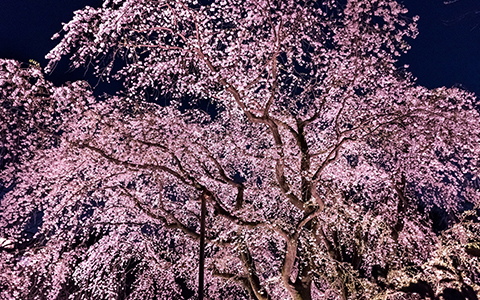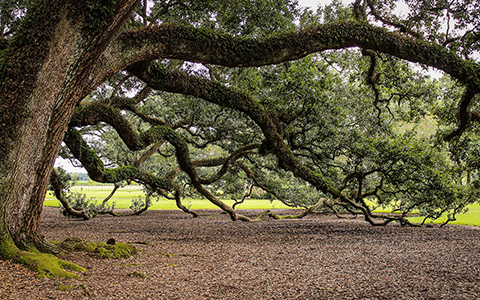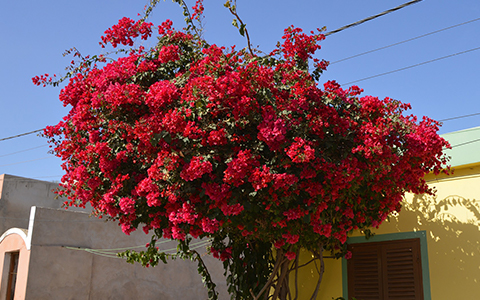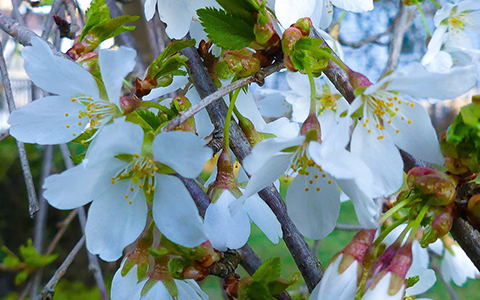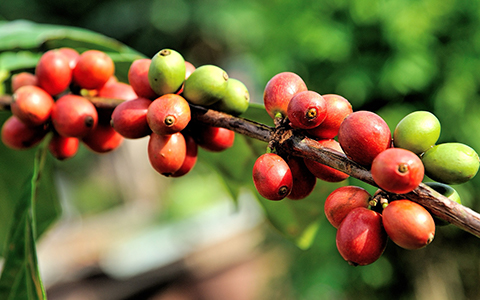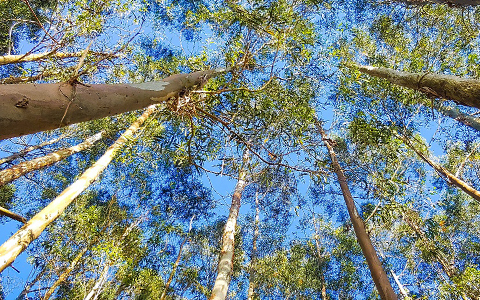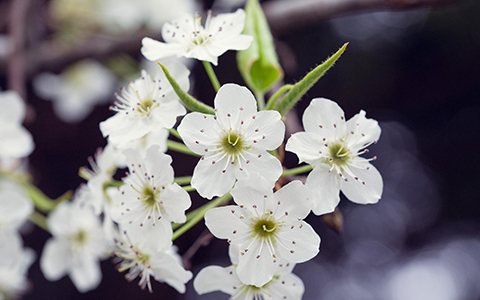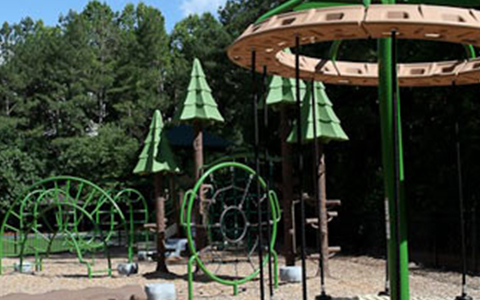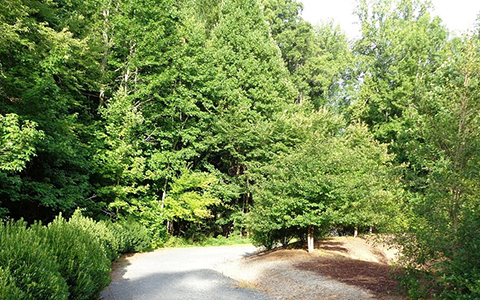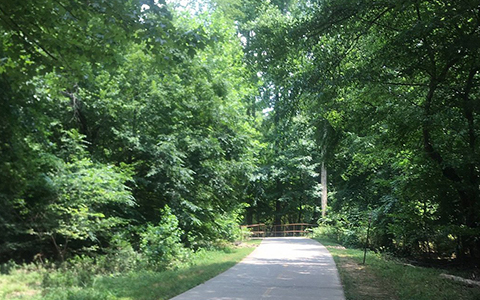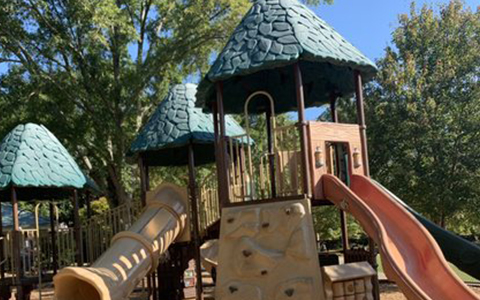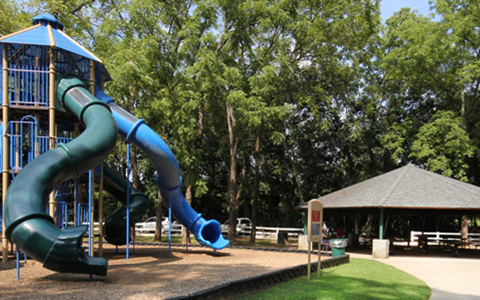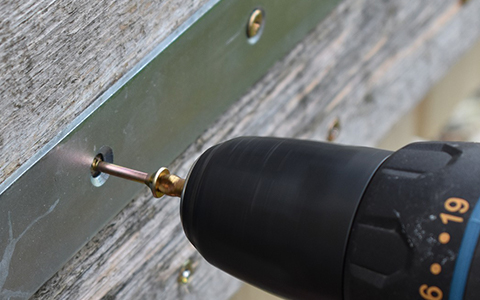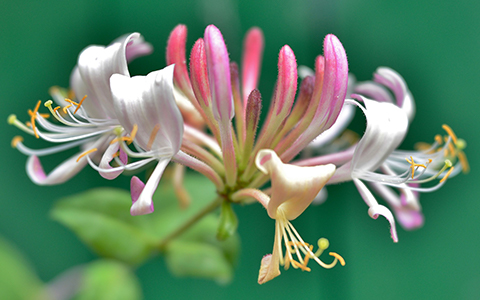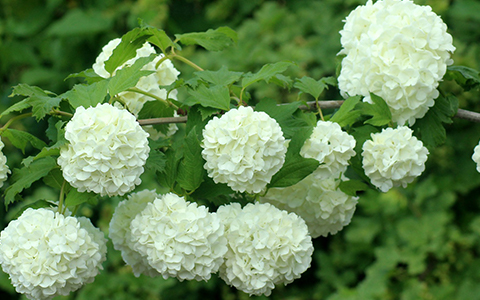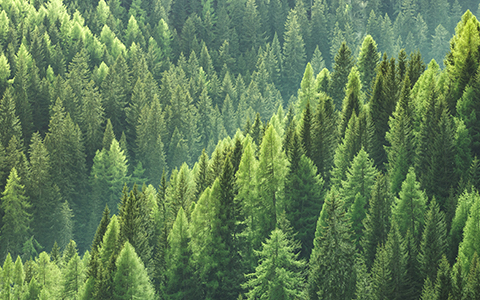
Keep treatable diseases from infecting and killing your pine trees. Recognizing the signs of disease and taking action to stop them will help you keep your pine trees robust and stable.
72tree.com gathered the following information and tips about pine tree disease signs, treatments, and prevention.
Pine Tree Disease
In years with heavy rainfall or severe drought, pine trees may brown in response. Browning is typically caused by the pine tree’s inability to uptake sufficient water to keep its needles fresh and alive. When moisture is overly abundant (and drainage is poor), root rot and other diseases are often the culprits. Consider the following pine tree diseases:
1. Annosus Root Disease (Heterobasidion annosum)

Heterobasidion annosum is a basidiomycete fungus in the Bondarzewiaceae family. It is considered one of the most economically damaging forest pathogens in the Northern Hemisphere. Heterobasidion annosum is widespread in US forests and is responsible for $1 billion in annual pine tree losses.
Appearance – In some cases, resin flow may appear near the root collar as the tree attempts to defend itself against attack. Diseased pines may show crown thinning and yellowing. In pine trees, the disease is most active in the sapwood, killing tissues and heartwood as it progresses.
Treatment – Carefully remove and destroy infected trees and stumps. Any stumps left in the ground should be treated with borax.
Prevention – This disease typically enters a pine tree stand when spores land on freshly cut limbs or stump surfaces. The fungus grows from the stump into nearby live trees via root grafts or contacts. For prevention, treat stumps with borax whenever thinning in a high-hazard area.
2. Diplodia Tip Blight (Sphaeropsis sapinea)
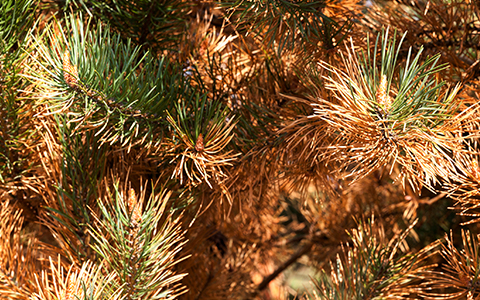
Diplodia blight, previously called Sphaeropsis tip blight, is a common fungal disease of stressed conifers, most typically pines with needles in bunches of 2's and 3's.
Appearance – Needles of new shoots will remain stunted, turn straw-colored, and will be glued in place from excess resin. Mature needles on branches end up killed by girdling cankers. Sticky, clear-to-white resin is found on dead twigs, the main stem, or branches with cankers.
Treatment – If you previously had problems with Diplodia, consider applying fungicides as the candles are expanding and then two more applications at 2-week intervals (bud break, half candle, and full candle). This typically prevents any spores from being disseminated from infecting the tree’s succulent new growth.
Prevention – Proper tree care, including increased irrigation during drought, pruning, and equipment sanitation are often effective methods for control of Diplodia tip blight and canker, especially when pines are newly infected.
3. Dothistroma Needle Blight (Dothistroma septosporum)

Pine trees of all ages can become infected. Symptoms are typically first seen at the base of the crown on older needles. Infected needles develop yellow and tan spots and bands, which soon turn red. As the disease progresses, the ends of the needles turn reddish-brown while the needle base oddly remains green.
Appearance – Reddish brown spots or bands appear on needles in the fall. Needle spots girdle the pine’s needles. The needle beyond the band dies and turns brown, leaving the bottom portion of the needle green. Tiny black fungal fruiting bodies will appear in the bands or the needle’s dead areas.
Treatment – A copper fungicide spray is an effective method to prevent needle cast. Other useful fungicides are chlorothalonil and mancozeb.
Prevention – If your trees have a history of Dothistroma needle blight, copper fungicides can protect new needles from infection. Fungicides need to be applied before buds open in the spring.
4. Fusiform Rust (Cronartium quercuum)
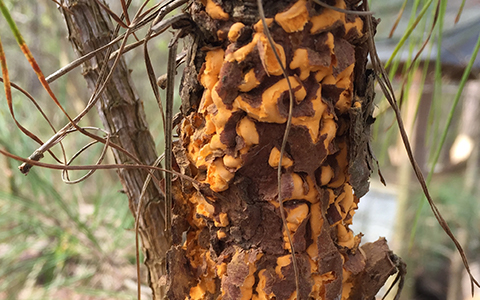
Fusiform rust is caused by a curious fungus that produces five spore stages and requires an oak and a pine tree to complete its life cycle.
Appearance – Fusiform rust is caused by Cronartium quorum f. sp. fusiforme. It produces bright orange spores on southern yellow pines, especially loblolly pine, in springtime.
Treatment – Avoid planting any rust susceptible pine tree species in locations where fusiform rust is or has been an issue. Pruning branch cankers and completely removing diseased branches can help lower potential trunk infection. However, once the trunk is infected, branch pruning is no longer recommended (careful tree removal and destruction is).
Prevention – Disease prevention is best accomplished by planting resistant pine species and treating all oak trees growing anywhere in the vicinity of your pine trees.
5. Needle Rust (Chrysomyxa ledicola Logerh)
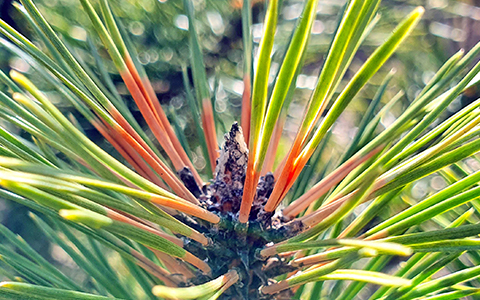
Pine or spruce needle rust is easily identified by pale, white, or orange blisters appearing on infected needles (in summertime). White blisters will appear on the current year's needle growth.
Appearance – Yellow-to-orange spots or bands appear on green needles in spring. In late spring to early summer, tiny, raised, white tubes form on needles breaking open to release powdery, orange spores. These infected needles can remain attached to the tree for several years.
Treatment – Needle rust is considered a minor stress on pine trees and typically requires no management efforts. However, when necessary, the most efficient rust disease control is to carefully prune and destroy affected areas and remove any visible galls (abnormal growths) in late winter or early spring before they can produce spores.
Prevention – Follow these best practices to help prevent spruce needle rust:
• Redirect lawn sprinklers away from pine branches and needles.
• Plant your spruce trees far enough apart to allow good air circulation between them.
• Prune out and destroy wilted or blighted stems and branches.
Note: In most cases, pine needle rust is a cosmetic issue, and no management is needed.
Pine Tree Disease Control
In this article, you discovered essential information and pro tips on identifying, treating, and preventing several pine tree diseases.
Knowing how to identify, control, and prevent deadly pine tree diseases will help you keep your pine trees thriving while stopping these diseases from spreading across your landscape.
Failing to recognize signs of diseased pine trees will lead to their death, potentially causing catastrophic damages and life-threatening injury when they fall.
Sources:
tfsweb.tamu.edu/uploadedFiles/TFSMain/Manage_Forest_and_Land/Forest_Health/Stewardship/Annosum_Root_Disease.pdf
fs.usda.gov/Internet/FSE_DOCUMENTS/stelprdb5299327.pdf
extension.umn.edu/plant-diseases/diplodia-shoot-blight-and-canker
forestry.ces.ncsu.edu/2017/04/so-what-is-the-orange-stuff-on-my-pine-trees/
extension.psu.edu/spruce-needle-rust
Photo Credit: craven.ces.ncsu.edu
This article was first published on: http://www.72tree.com/5-pine-tree-diseases-and-treatments/